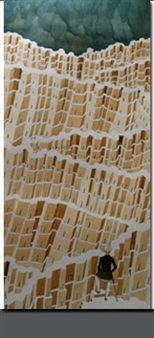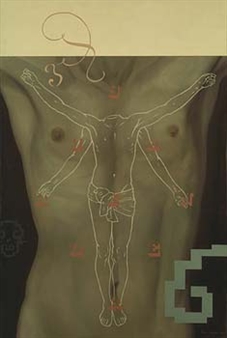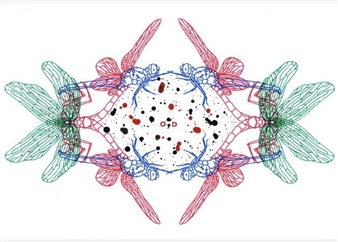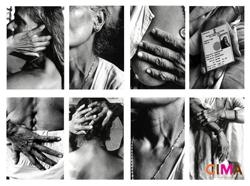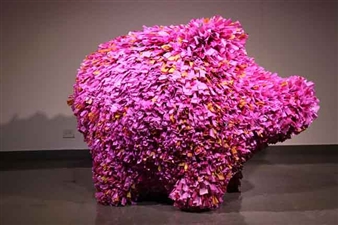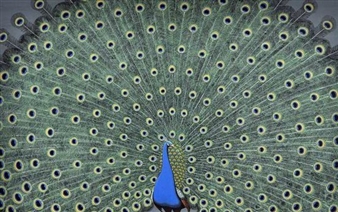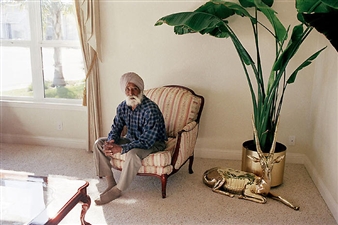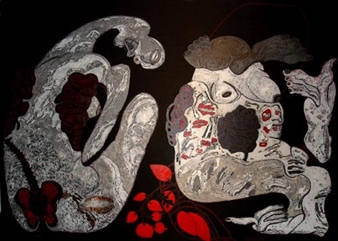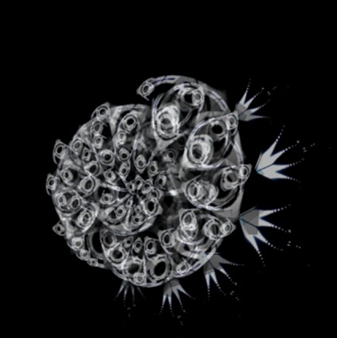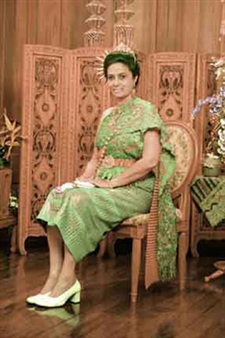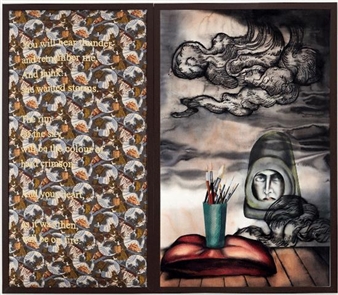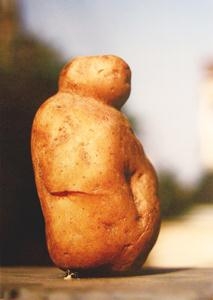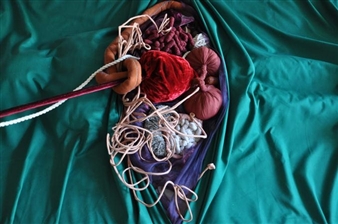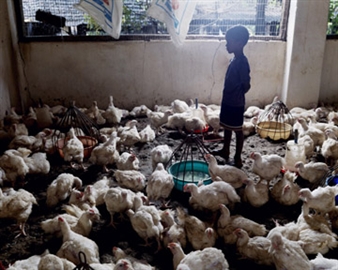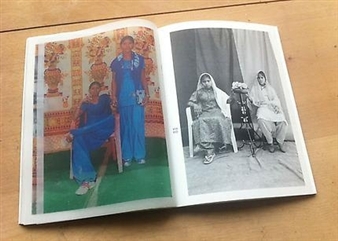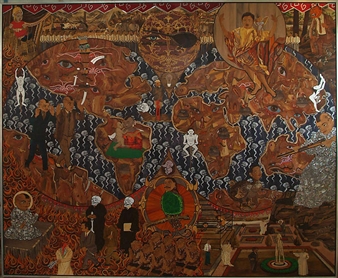Recent Works by Yashwant Deshmukh
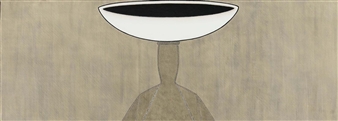
Tao Art Gallery, Maharashtra, Mumbai, 12/04/2012 - 12/25/2012
165 Dr. Annie Besant Road Worli
Yashwant celebrates the existence of objects that are part of his urban reality. He accentuates the lyrical and meditative elements of the object, and preserves the resonance in a monochromatic painterly treatment. This is an exercise in simplification of form. His objects become intimate autobiographical evocations that celebrate the poetry in our everyday reality. In most of his work the sculptural qualities are highlighted, and there is play with scale to make them larger than life. He celebrates the ordinary ubiquitous object and gives it iconic status. His objects grow beyond human scale and control. He limits his palette to a narrow range of tones which transform the objects into subtle poetic images; objects that symbolize the ordinary and are an extension of the body.
The artist has been exploring the phenomena of spatial perspective, and dialogues with colours with precision and assurance. He is able to create an eerie stillness and silence with these objects of utility and beauty. The heavily textured background has an abstract quality that creates spatial dimensions to locate his objects in focus. The pictorial devices are largely monochromatic browns and grey.
His quest for playing with space, texture and the angular linearity of the objects is meditative in quality. Design has become his term of expression and can lead to poetic perception in surface and depth.
As a restless artist, Yashwant has been constantly reinventing himself and pushing the boundaries of his conformity. In his last show, the artist created a sculpture which was a classical cone, in charcoal black. The scale and the tactile material explored the volume and the void created by the object.
In most of his early work the human presence was evoked by the object. The ergonomical design element of the object was central to his enquiry. He evoked the human presence by absence and invested in his objects to give an iconic presence, like a living entity.
In his new series the human body is at the centre. The borders of the image define prana–life breadth inside and loka—the world outside. Again these are iconic images, silhouettes of human beings in situations of action or repose. Yashwant looks at all forms as divine manifestations. They occupy the colour field as two-dimensional spaces and assert the human presence.
The artist recollects his rural upbringing, remembering his connection to agrarian society and his personal association to acts of labour that he witnessed during his childhood.
The cow and the local milkman are called “Kamadhenu” to respect labour and to explore the idea that work as worship. The tactile canvases are reminiscent of the clay and cow dung smeared on village walls. Another canvas depicts a Man carrying merchandise as a petty vendor; his body becomes an extension of his labour. The night watch man expands into a monumental figure and becomes a part of the architecture. Two sound speakers are bombarding the young girl on stage, probably reciting her first song in public. A happy young man sports a cool sling bag, his out-stretched hands are open as if embrace the entire world. He celebrates iconographic divine images of Pandurang and Rukmini, they are seen as divine light. These images are monologues of individuals/actors who are enacting a poignant script of the artist in the theatre of life.
Yashwant’s solitary images occupy centre stage and are frozen in time. He portrays humans in stoic silence. He looks at all humans as divine manifestations of the universal spirit, and invests in the essentials of the human body and gestures to create haikus from a lived reality.
Suresh Jayaram
For More Information